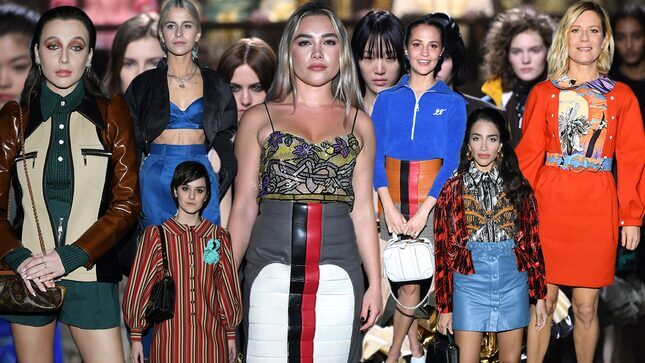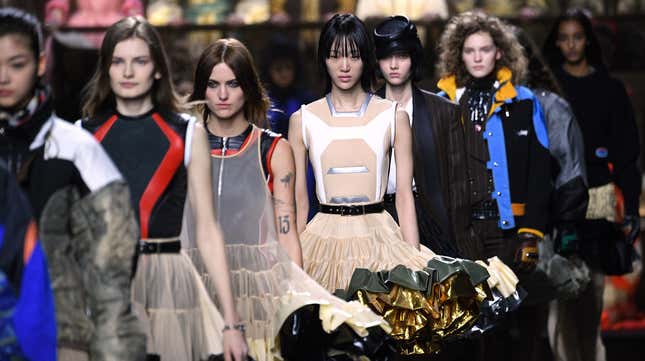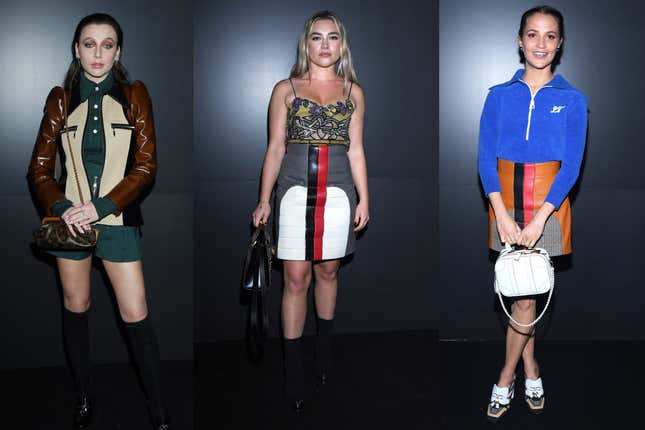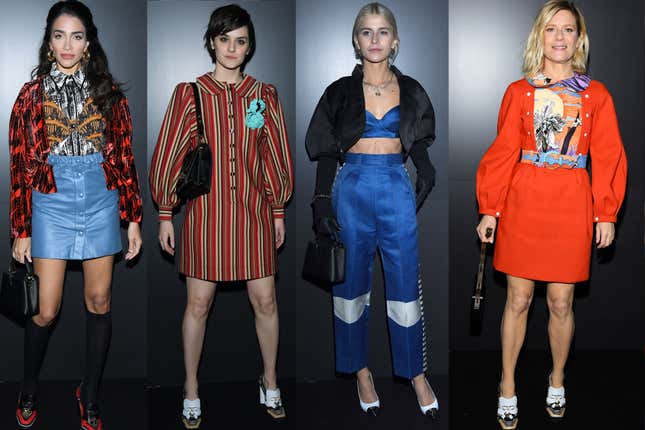

At one point in recent fashion history, Louis Vuitton creative director Nicolas Ghesquière was revered as a god. Every celebrity wanted to be dressed by him, and more importantly, every stylist coveted the larger-than-life gowns he created at Balenciaga, where he was hired as creative director in 1997. I still have his Spring/Summer 2001 campaign, shot by Inez and Vinoodh, hanging on my wall, and frequently browse eBay looking for the Balenciaga pieces Kylie Minogue wore during her “Body Language” era circa 2003. (Including the blouse dress and crimson moto-pants seen in her “Red Blooded Woman” video.)
In the 15 years he designed for Balenciaga, his status as the god of fashion was rightly deserved, as he pioneered adventurous silhouettes and extreme proportions, and ushered in a new age in womenswear. When the house announced his departure in 2012, the news shocked many. That surprise only deepened when—almost a year later—LVMH announced that he would be the new creative director for Louis Vuitton, replacing powerhouse Marc Jacobs. While the prestige that came with the Louis Vuitton moniker was undoubtedly a trade-up for Ghesquière, Jacob’s penchant for risqué designs and playfully sexy clothing (evidenced best by Mariah Carey’s love for his clothes) seemed at odds with the brooding, often overly serious woman Ghesquière had been designing for. In the seven years since taking over the house’s creative direction, I think that suspicion has been undoubtedly proven correct.
While recent seasons have grown increasingly banal in terms of taste, Ghesquière has still managed to consistently grow Louis Vuitton into an all-consuming powerhouse. His strong eye for styling the brand’s accessories and purses—the primary chunk of the brand’s sales—helped raise the high-profile status of the eponymous “LV” monogram print, which fell in popularity amid Jacobs’s late aughts run. These days, it is as covetable as the Gucci logo, and plastered everywhere you find fashion. But while the brand has grown its accessories division, Ghesquière’s designs seem to have plummeted off a creative cliff.
-

-

-

-

-

-

-

-

-

-

-

-

-

-

-

-

-

-

-

-

-

-

-

-

-

-

-

-

-

-

-

-

-

-

-

-

-

-

-

-











































